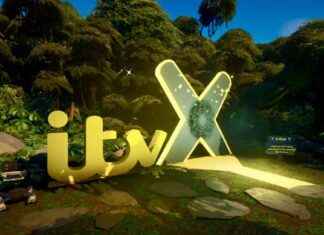If the internal memory of the PlayStation 4 is full, an external hard drive for the console will help. The comparison reveals which models are worthwhile and why.
The PlayStation 4 is still in many German living rooms and new titles are still appearing for the console, which came onto the market in November 2013. This is probably due to the poor delivery situation of their successor for a long time. It has since improved, but it remains questionable whether this will encourage many PS4 fans to buy new ones.
After all, the PlayStation 5 in 2023 still costs almost the price that Sony charged for its console when it was launched in November 2020. Apart from that, PS4 players know one problem in particular very well: their console’s internal memory is overflowing. This is of course due to the fact that an enormous number of games for the console have come onto the market in the past ten years and it is not always easy to clean yesterday’s favorite game from today’s plate.
External hard drive PS4: Gamble directly from memory
Then it is either a case of using the existing storage properly or purchasing an external hard drive. The latter is the more convenient solution, because not only games can be saved on the external storage medium, but also played directly. This is practical when gamers want to play a game with their friends on the couch, but the friends don’t have the game they want. Of course, the player who owns the game has to sign in to their friend’s console with their PlayStation account in order to be able to play it from the external hard drive. Incidentally, this is not possible with the PlayStation 5.
The difference between HDD and SSD
The question remains as to what type of storage medium gamers want to use. You have the choice between a classic hard disk drive (HDD) and a solid state drive (SSD). The difference between the two lies buried in their reading and writing technique. With the HDD, a magnetic button reads and writes to the storage medium. An SSD is flash storage that allows more direct access to data.
In games, for example, this shortens the loading times between sequences. With the same price for the same size, gamers should always go for the SSD. But that is not the case yet. The classic external hard drive is usually cheaper and offers more storage for less money. If you don’t feel like long waiting times, you can use the fast SSD. Patient bargain hunters are better off with the HDD.
Important: Note formatting
Not every external hard drive works with the PlayStation 4 without grumbling. Some models need to be formatted briefly before use. Sony explains how this works with brief instructions. You can format the hard drive as extended storage under Settings, Devices, USB Storage Devices. Complete.
Otherwise, it is important to ensure that your PS4 system software is running version 4.50 or higher, that the hard drive works with at least the USB 3.0 protocol and has between 250 gigabytes (GB) and 8 terabytes (TB) of memory.
Important: If you want to use the hard drive for the PlayStation 5 in the future, a newer USB protocol (3.2) and a USB-C interface is an advantage. As a reminder: USB 3.2 offers a data throughput of 10 gigabits per second (Gbit/s) and therefore moves data from external to internal storage twice as fast as USB 3.0 (5 Gbit/s). With an average size of 60 GB per game, this saves a lot of time.
Attention: With the PlayStation 5 you cannot gamble directly from the external memory. The games must first be dragged to the internal memory. Enough theory, just enjoy the comparison.
Anyone looking for a lot of memory for little money will do well with a WD Black P10. The external hard drive comes in a handy 2.5-inch format and works with the USB 3.0 protocol. Your memory measures a whopping 5 terabytes (TB). Unfortunately, the supplied USB cable only offers a USB-A connection. But since the PlayStaton 5 also has USB-A sockets, that’s enough. There is a USB micro-B socket on the WD Black P10 itself. With a read and write speed of 140 megabytes per second (MB/s), the external hard drive is more frugal than the SSD.
Another proven gaming hard drive is the Seagate Game Drive PS4 with 2 terabytes of storage. Compared to the WD Black, it offers a significantly worse euro-per-terabyte ratio. And the read and write speeds are also slower at 130MB/s. However, this is not really noticeable in practice. Both disks share their handy size of 2.5 inches. And the supplied cable is also one from USB-micro-B to USB-A. Only its design should therefore encourage buyers to buy it: the official PlayStation logo is emblazoned on the hard drive and the case also flatters the PS4. This is the perfect external hard drive for design lovers.
The SanDisk Extreme PRO Portable is not particularly big, but it is particularly fast. It impresses with a brisk reading and writing speed of 2000 MB/s. However, it will not be able to fully access this on the PlayStation 4 because the console’s USB sockets do not let enough data through to savor the full performance of the SSD. The hard drive works with the USB 3.2 Gen. 2 protocol, which allows a maximum data throughput of 10 Gbit/s. SanDisk ships two cables with its external SSD: A USB-C to C (USB 3.2) and a USB-A to C (USB 3.0).
Attention: The USB-A to C cable only offers USB 3.0 and thus slows down the theoretically possible read and write speed. The SanDisk Extreme Pro is therefore an external SSD for gamers who want to switch to the PS5 in the near future. As a reminder, the PS5 cannot (yet) load games directly from the external SSD. Therefore, the games have to migrate from the external to the internal memory. The faster the external SSD reads and writes, the faster games shift. With 60 GB games, this makes a noticeable difference.
A cheaper and somewhat slower external SSD for the PS4 is the Crucial X8 with 2 TB of storage. Compared to SanDisk’s Pro model, it offers twice the storage for a lower price. Unfortunately, the SSD “only” reads and writes at 1050 MB/s. However, this is still significantly faster than the internal hard drive of the PS4. Crucial uses 3.2 for the USB protocol, which is why the X8 is also ideal for use with the PlayStation 5. The manufacturer supplies two cables: a USB-C to C (USB 3.2) and a USB-A to C (USB 3.0). Again, the USB-A to C cable only works with USB 3.0 and thus slightly slows down the theoretically possible read and write speed of the memory. Overall, the Crucial X8 Portable offers a decent price/performance ratio.
This article contains so-called affiliate links. Further information are available here.





















